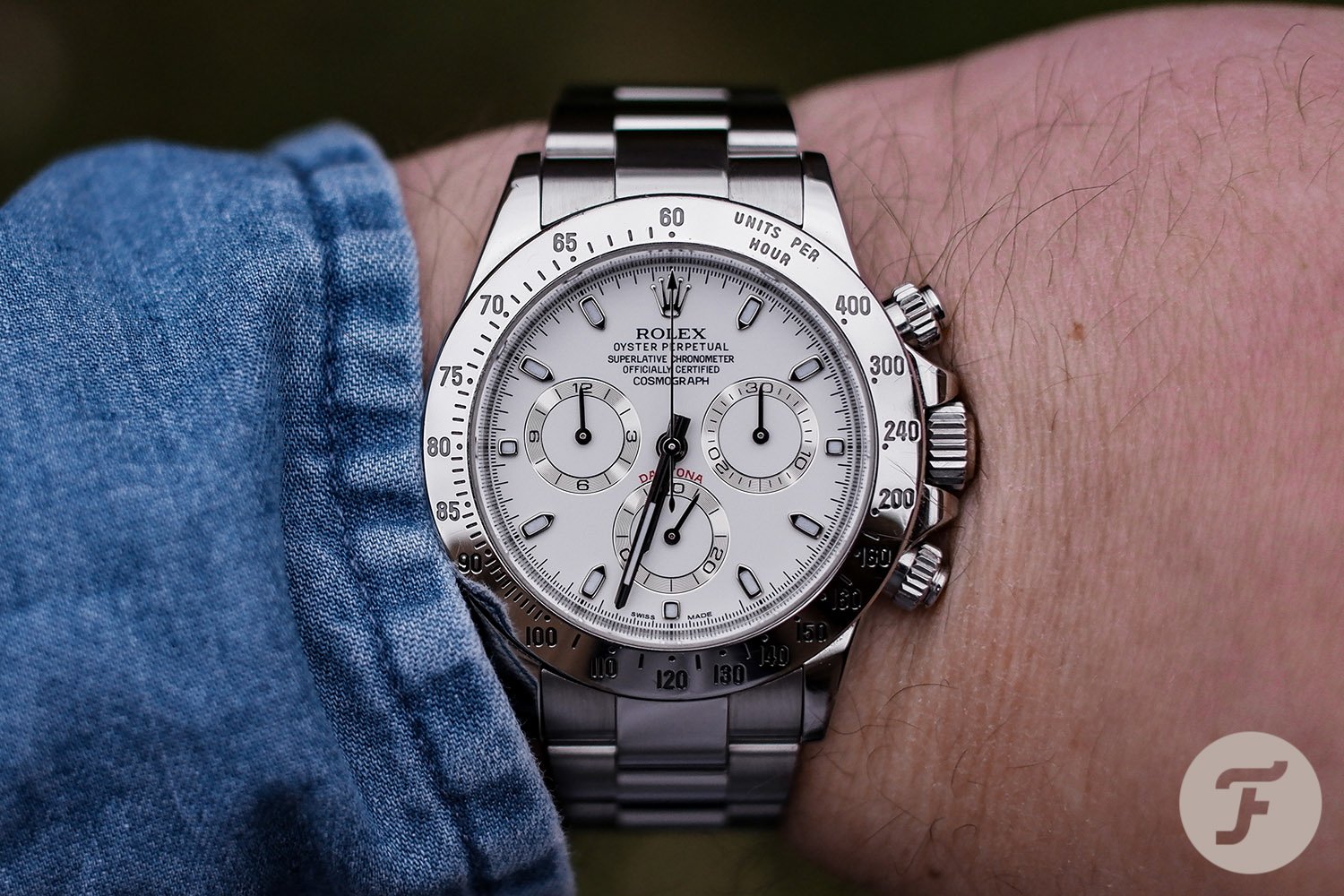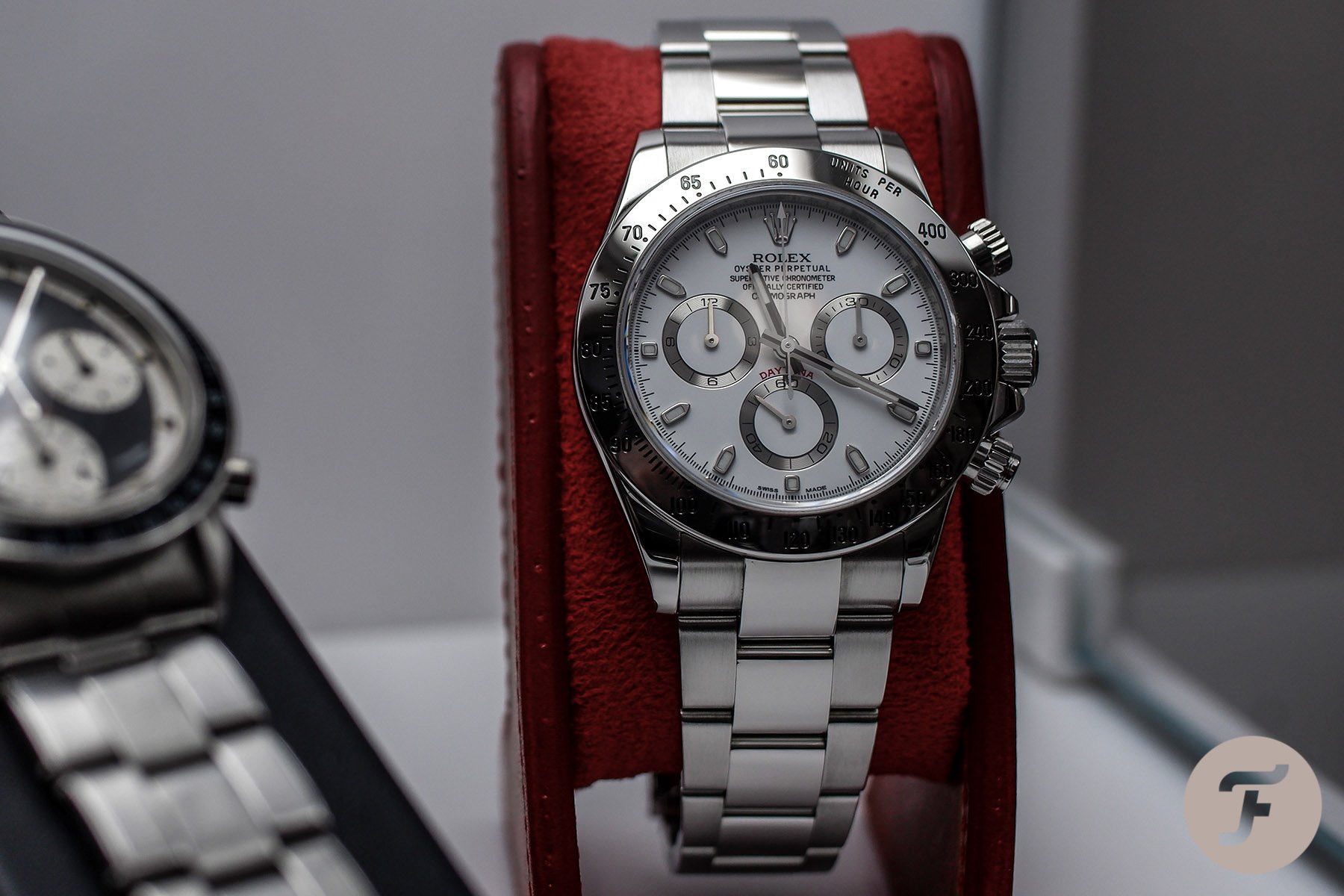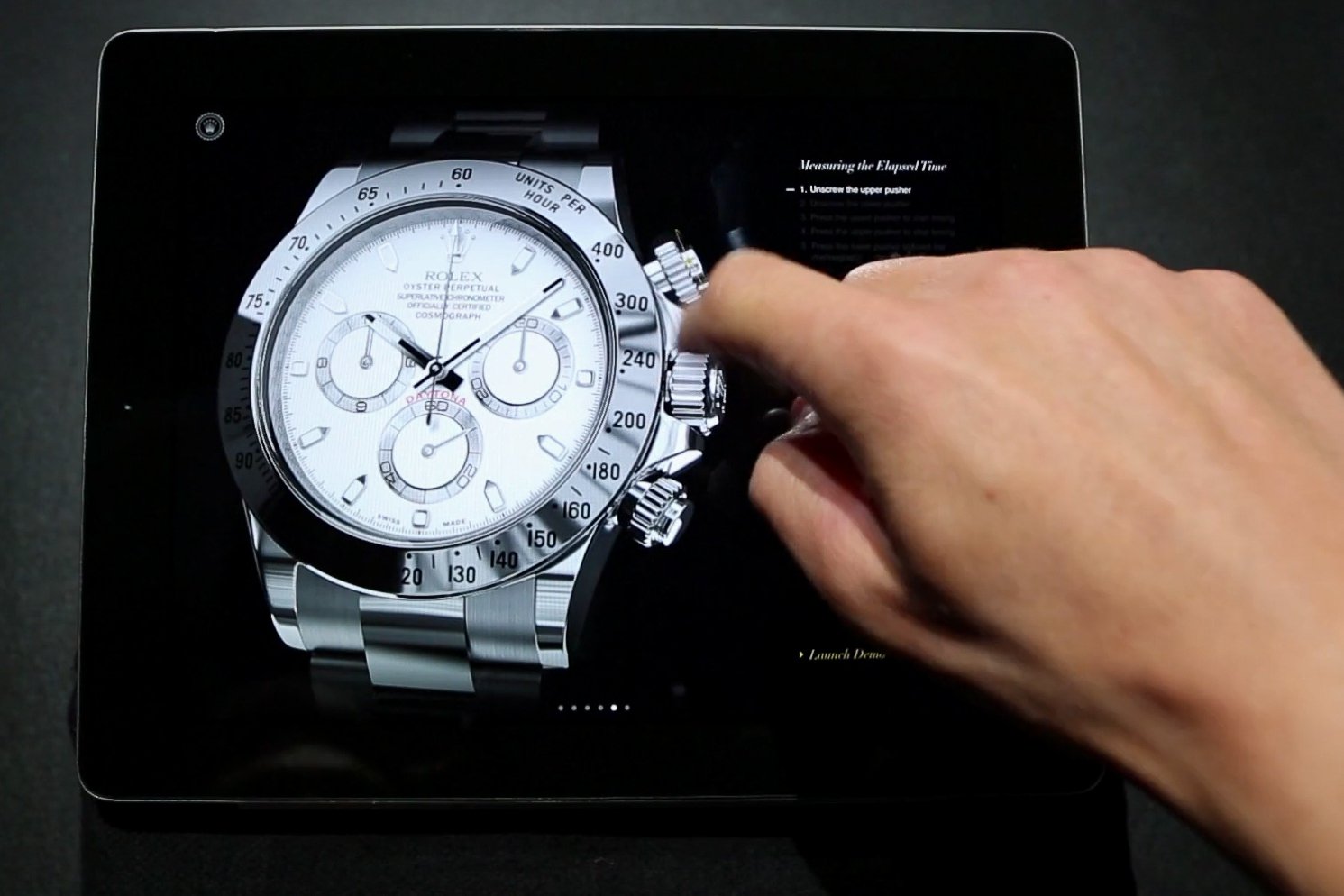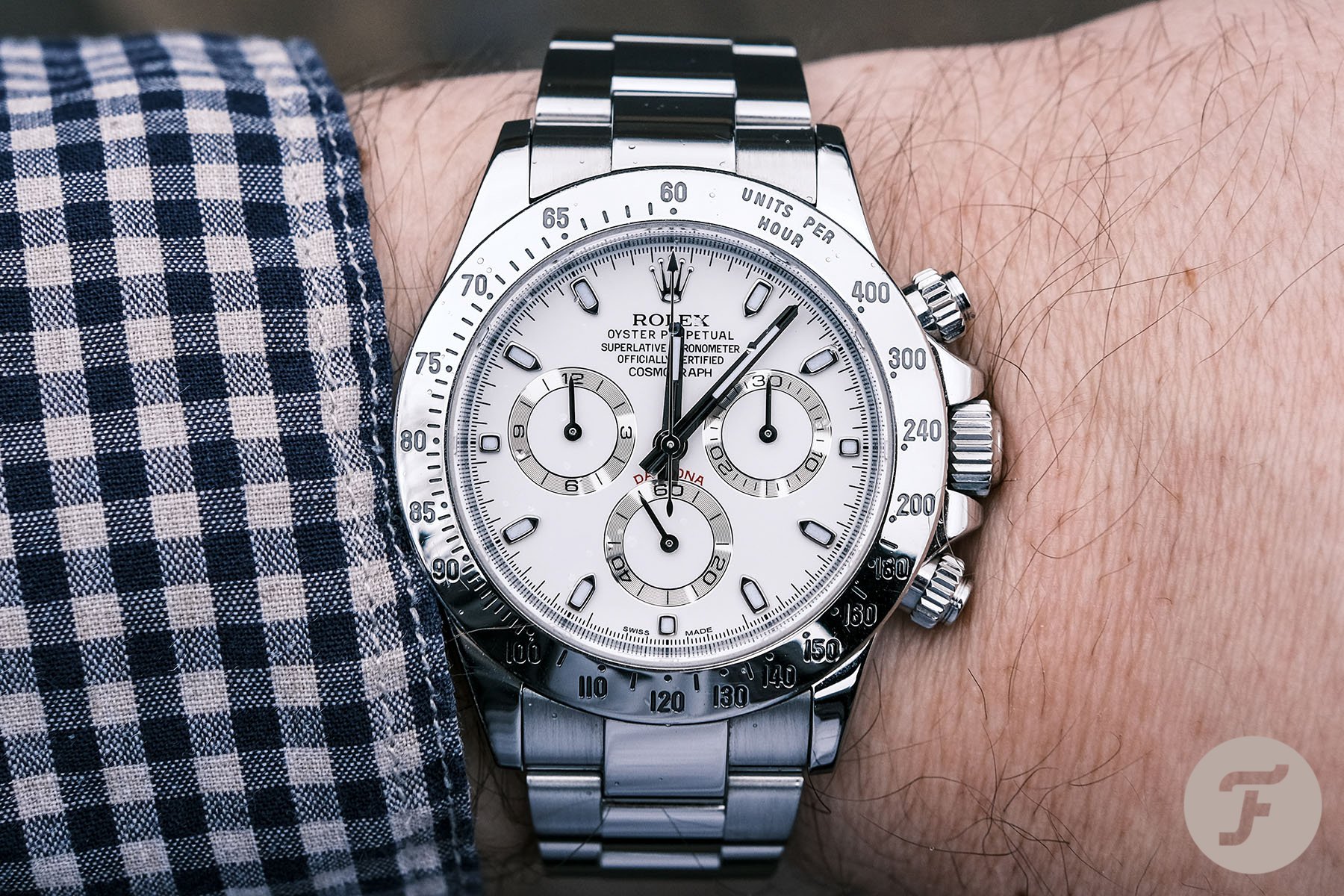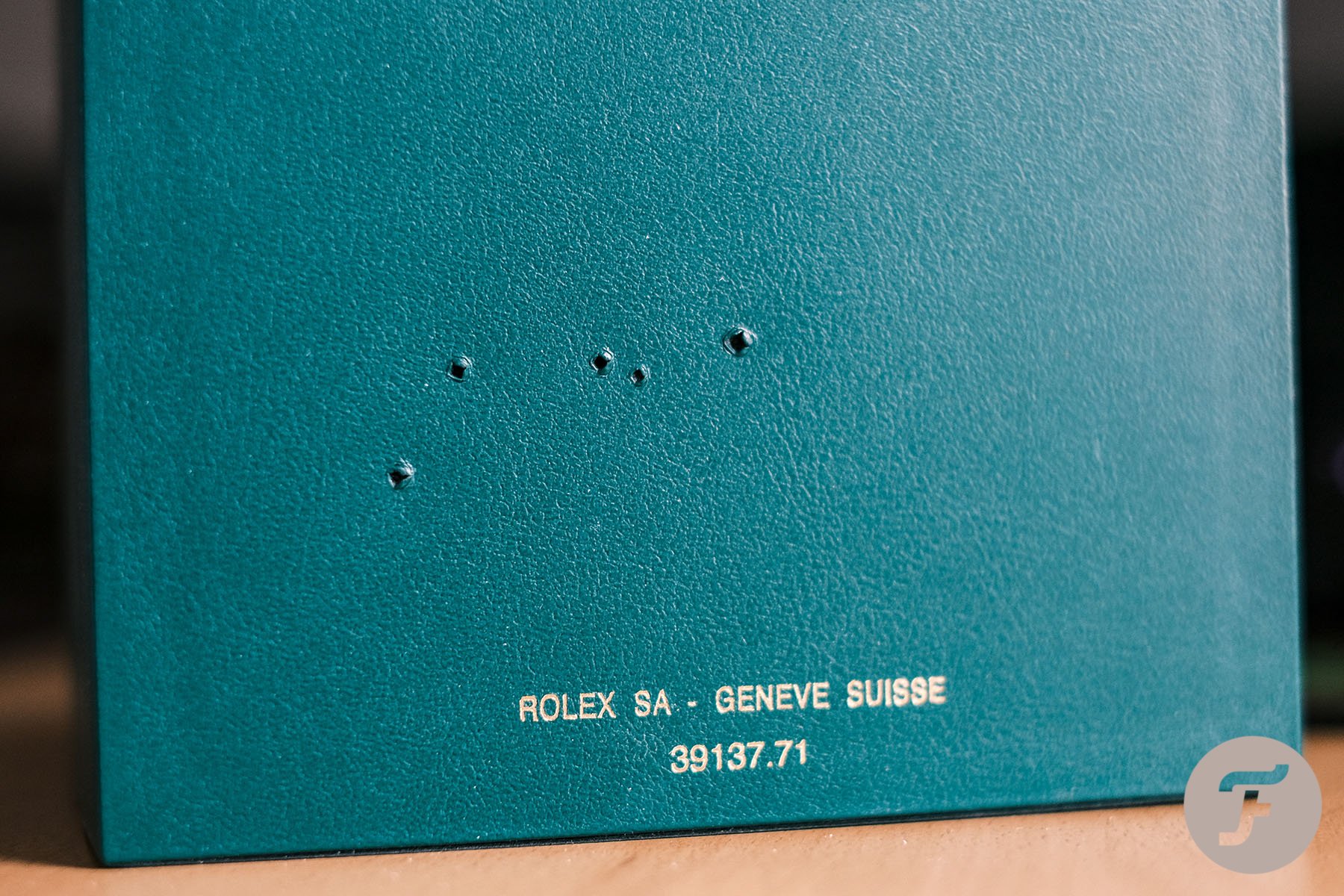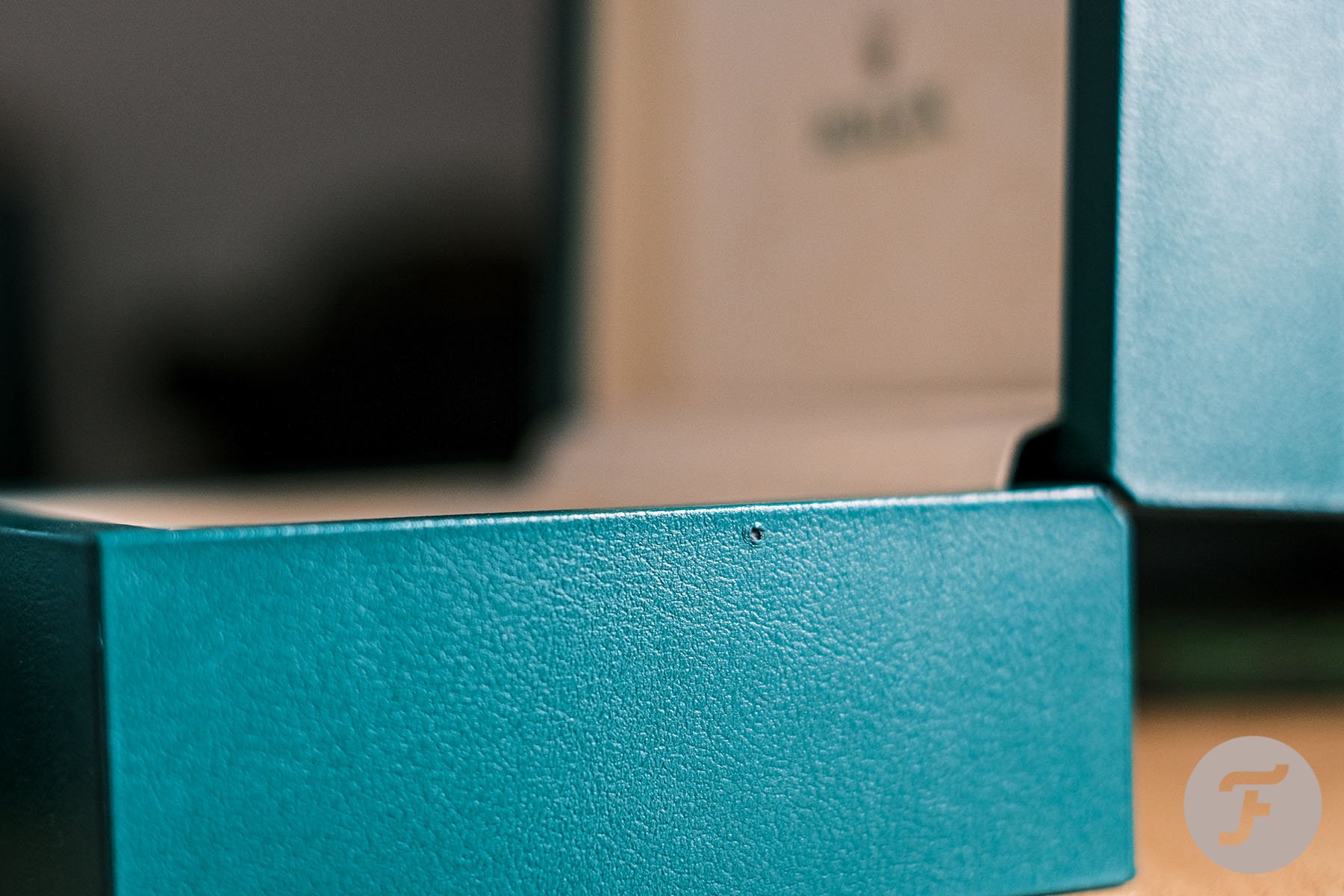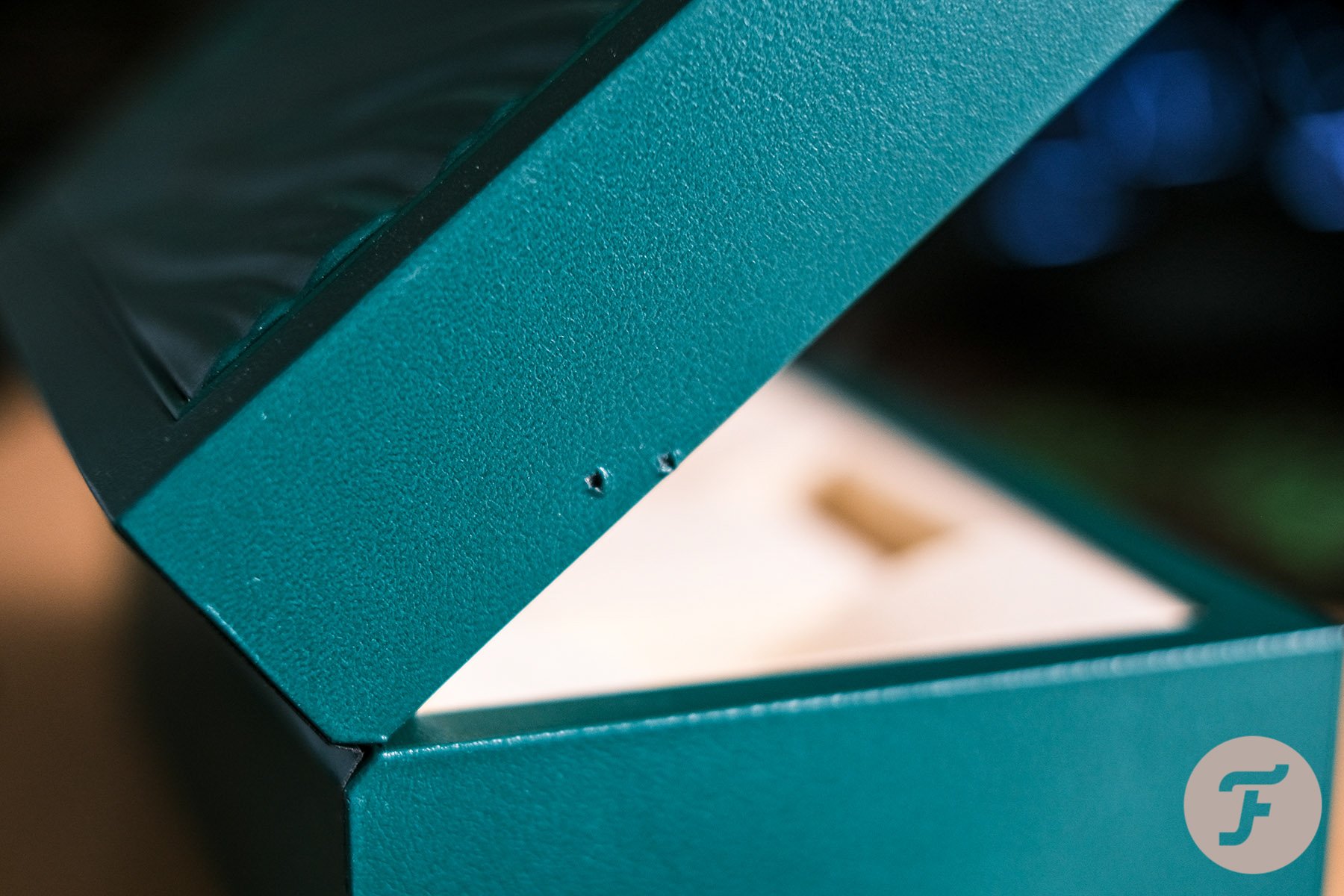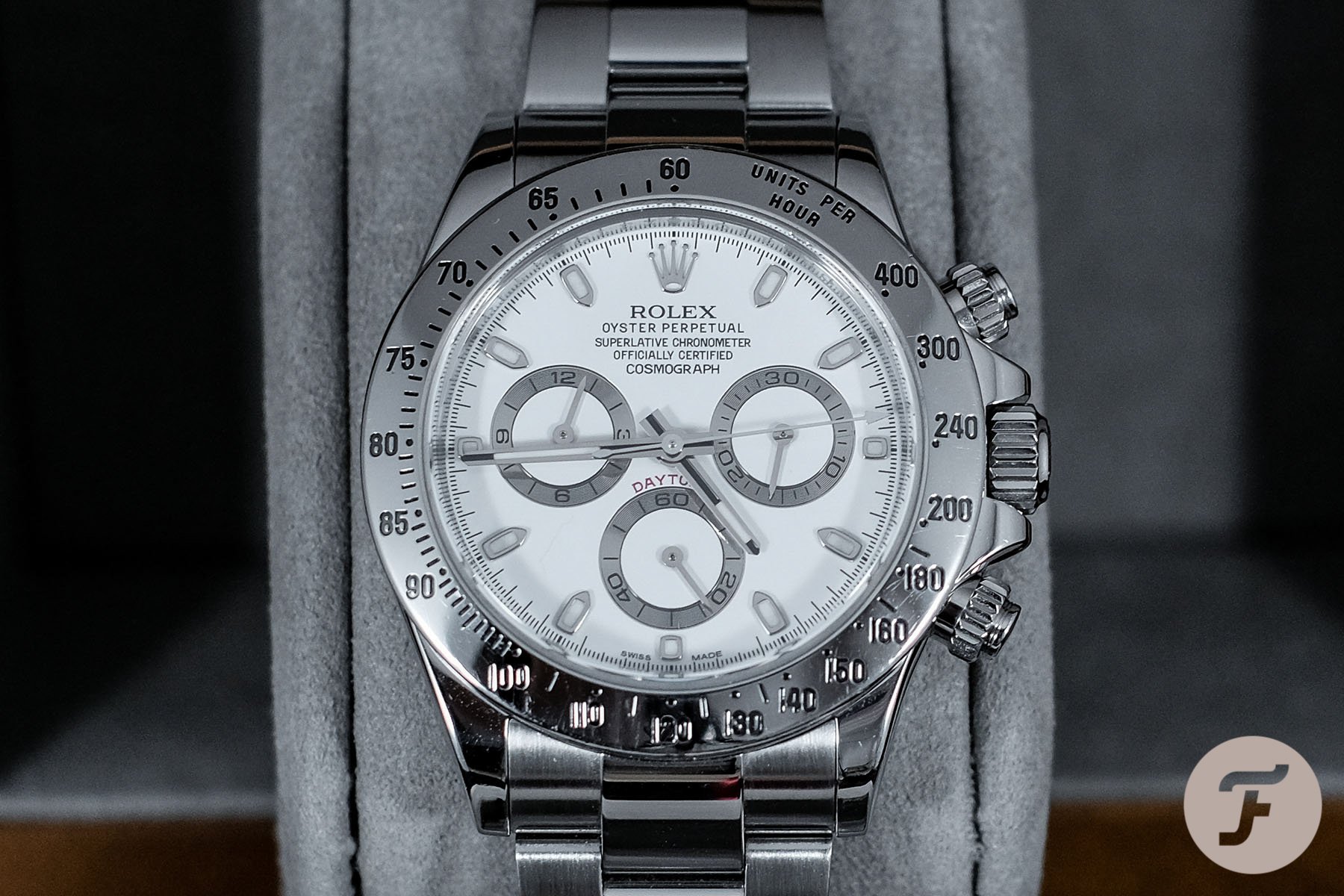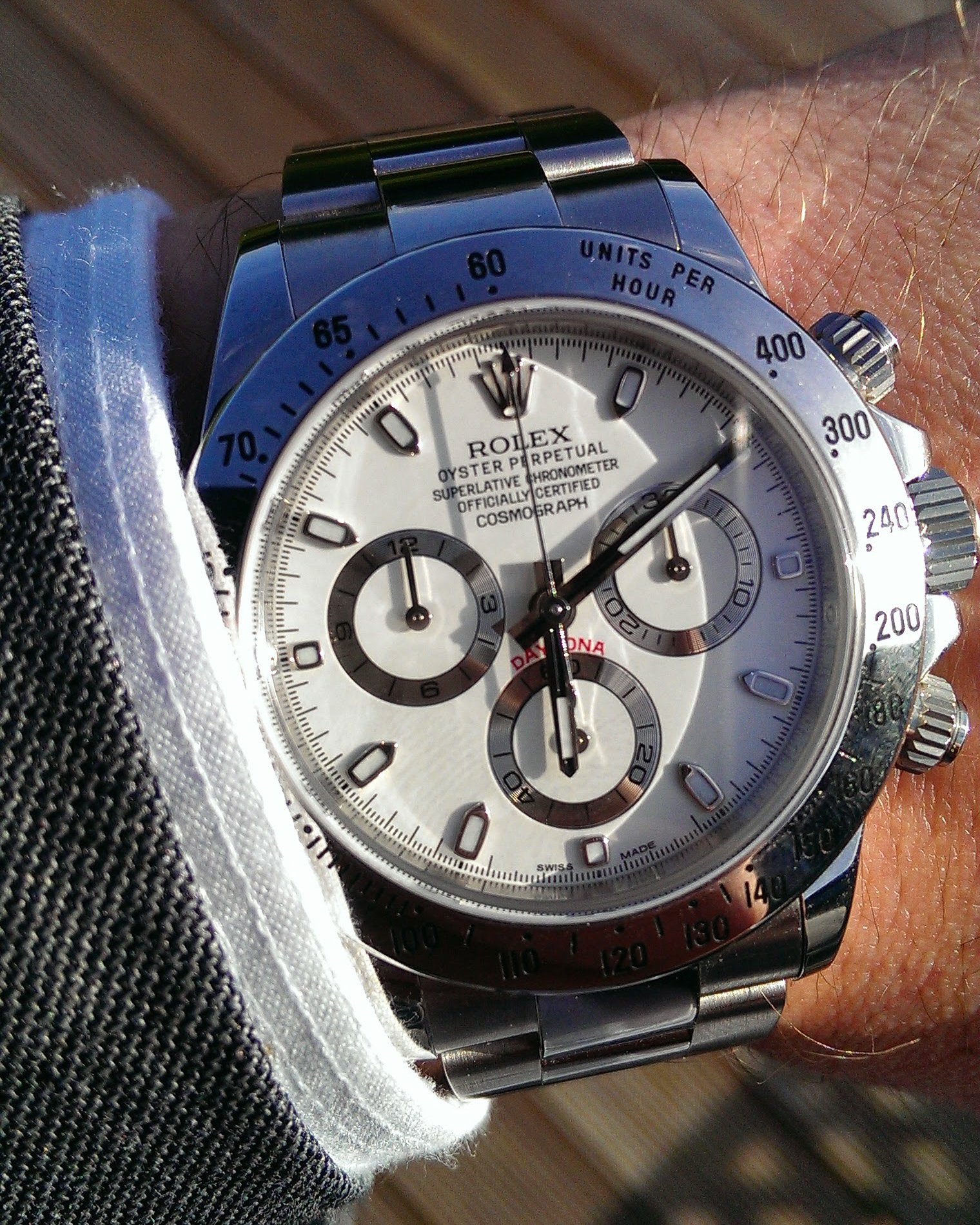Why I Bought The Rolex Cosmograph Daytona Reference 116520
The story behind my stainless-steel Rolex Cosmograph Daytona reference 116520 is long overdue. For good reasons, though — it is a tale of both joy and woe. For those of you that covet the Daytona as the chronograph to end all chronographs, that may sound surprising. But trust me, those shades of feeling are very, very real. It took me a while to come to terms with this story, but I’ve learned to embrace it now for the experience I earned through it. And now, after all is said and done, it’s time to share it with you…
At the millennium’s turn, reference 116520 saw the Daytona updated. It became the first Rolex with an in-house automatic chronograph movement. Before that, the El Primero caliber beat away at 4hz within reference 16520. This particular reference 116520 is a later iteration in the lifecycle that features the “APH” dial. “APH” refers to the spacing between Cosmogr and aph seen only in the steel models for a few years between 2011 and 2014. Counterintuitively, this mistake lends a premium, although, in my view, it is only a minor point.
Rolex Cosmograph Daytona reference 116520
In 2014, my watch passion was possibly at its peak. I am still passionate now, but I balance it with many other interests. Back then, my sudden watch obsession was all I could think about day and night, and I spent most of my free time absorbing information wherever I could find it. It was both an exciting and daunting period as I was on a mission to bring myself up to speed with all things horology. A fruitless endeavor, as I still consider myself a pupil rather than a tutor.
The Omega Speedmaster and Breitling Navitimer were very well known to me…
What was made evident during my early influx of information were the pillars of iconic watches. The Omega Speedmaster and Breitling Navitimer were very well known to me even before taking an educated interest. However, the JLC Reverso and AP Royal Oak, for example, were entirely new designs to my naïve eyes. Funnily enough, after studying the distinct lines of both the Royal Oak and Reverso, I began taking notice of their appearance in movies, books, and magazines.
The pillars of iconic watches
The Rolex Daytona was something I was very much aware of and had a strong attraction to before I could ever think of affording one. Similarly, the GMT-Master II and Omega Seamaster Diver 300M were well on my radar. At the time, neither the GMT-Master II nor Seamaster was available brand new in the configuration of my preference. Those being the Pepsi-bezel in steel and wavy blue dial versions, respectively.
But the Rolex Daytona in 2014 was exactly the style from my early memories. In a way, it helps that the design remained mostly unchanged from the late ’80s and from my initial exposure.
So that sealed it, the first Swiss watch that I would put my cash down for would be the Rolex Daytona. Simple right? Just pop down to my local retailer and swipe my card, and skip my way home.
Not. A. Chance.
Even in 2014, when big, gold, and complicated watches seemed the hottest potatoes, a steel Daytona was impressively hard to find. Two years. That was the time it would take for me to earn the right to part with $11,400. Looking back, two years seems like a fleeting moment in comparison to the infinite waitlists nowadays.
Angry Birds or digitized mechanical watches?
Still, my insatiable lust for the Daytona was at a fever pitch, and two years was a lifetime away. To pass the time, there was an iPad application commissioned by Rolex that allowed you to interact with the controls of the timing functions. You could unscrew the pushers, start and stop the chronograph and reset the hands. All while displaying the real-time on the digitized hands. It is not the same, yet I dug into this app more than Angry Birds.
I wish I could apply the same focus to something more worthwhile.
My racing passion and respect for Paul Newman furthered my intrigue into the Daytona and the fascinating history from the model’s inception. So the furious plotting and planning to obtain the Daytona was underway. In certain aspects, I wish I could apply the same focus to something more worthwhile. I planned to look further afield. The theory was that the customers in my area were broadly drawn to the same watch styles, therefore building demand for a particular model.
International tastes
In other continents, there was the possibility that different watch styles had more mass-market appeal. Hence, freeing up the sporty models such as the steel Daytona for the rest of us. I do want to point out that I am recounting my mindset from seven years ago. I am fully aware that these theories are beyond dated. Even so, it was a safer assumption back then than it is now. Rolex sports models have enjoyed a far more significant global presence over the last few years.
I remember wearing the watch for the duration of the trip.
As luck would have it, I ran into the Daytona in person during my travels to St. Lucia. There it was: the Rolex Daytona 904L stainless steel with a white dial sitting in the window just begging to be taken home. This part of the story is the joy I referenced in the opening paragraph. It’s hard to recollect all the steps of my retail experience, but I remember wearing the watch for the duration of the trip. The Daytona was every bit worth the hype and truly outstanding on the wrist.
Swiss cheese export
Now for the woe. Again, this is me re-assessing a past mistake that I am not too proud of. My threadbare research highlighted a potential issue with bringing the watch home to the UK. Items over $1,600 require a duty charge of 21%. That is quite a sizeable chunk of the $11,400 price tag. Buying duty-free is only available on certain products up to a specific quantity, such as cigars, liquor, etc. I wouldn’t let dropping this amount of moolah on an already expensive watch sully the process.
…unique to just me and my Daytona.
The best dumb idea I had was to wear the watch on the wrist without declaring it. Sounds simple, but then there’s the problem with the box. I didn’t want to risk being found out by having it in my carry-on luggage. Therefore, I elected to FedEx the Rolex box home to my address. Upon return, I was eagerly anticipating the arrival of the box and completing the package of ownership. My eagerness turned to dismay when I saw the box.
UK customs went to town and stabbed the Rolex box to within an inch of its life. I guess that they were checking it for drugs or considered it a suspicious package. I thought about complaining for a brief moment but did not want to envelop myself in more significant trouble. At first, I resented this aspect about the watch, but it became an anecdote that felt unique to just me and my Daytona. But I also retell this as a cautionary tale for anyone else to always declare items for customs duty. We have a bit of history on this at Fratello.
Asymmetrical lugs on the 116520
Regardless of the box, the watch was fantastic to wear. I also began to realize quirks about the way the case was shaped. I never knew the lugs are slightly lob-sided to account for the screw-down pushers. If you see the photo above, the right-hand side lugs are thinner and join the case sooner than they do on the left side — almost the opposite of the Speedmaster Professional. Strangely, the lugs of gold and platinum Daytonas are symmetrical. The case is also much smaller than the 40mm diameter listing under the specifications. At first, I thought the Daytona wore deceptively smaller due to the proportions, but measuring with accurate calipers, I discovered the case is actually around 38.5mm.
A bonus is a slight curvature in the case sides, rather than the GMT-Master II and Submariner’s slab case bands. This is also seen in models such as the Day-Date, Yacht-Master, and Oyster Perpetual. It certainly pushes the Daytona into dressier territory, especially with the polished center links. The Oyster bracelet is more substantial than Oyster Perpetual and Datejust with the safety lock clasp and Easylink extension. A hidden link articulates outwards and clips inwards, providing a comfort adjustment of up to 5mm.
The picture that led to a thousand more
The Daytona’s 4130 movement ticks away solidly with 72 hours of power reserve with a satisfying operation of the chronograph pushers. Unfortunately, I did not take many photos of it during the early part of its life as I was still a little bitter about the customs experience. But now, the box does not factor into my psyche, and I embrace it. I have one photo that I took the day after my return home, and it actually marks my first ever wrist-shot. The lighting is quite harsh, and it’s shot with a mobile phone camera, but this wrist shot kick-started my photography passion.
I prefer the horizontal text of my 116520…
Two years later, in 2016, Rolex brought out the 116500LN with a black Cerachrom bezel. The white dial version took styling cues from earlier Daytona references, such as the ref. 6240 that had a black acrylic bezel. But also the ref. 16520 with black rings around the chronograph sub-dials. I was there at Baselworld for the launch and was blown away by the introduction. I still think it is a stunning piece, but I prefer the horizontal text of my 116520 model’s steel bezel instead of the bold, radial tachymetric scale on the Cerachrom.
Why I still prefer the 116520 over the 116500LN
Other than the bezel, the model change was somewhat iterative. But that bezel did maximize the overall wrist presence even with identical dimensions. The sub-dials are still placed just slightly north of the center pinion, which differs from the earlier Zenith Daytona. This hasn’t been a problem for me, but I appreciate that it irks some people — especially Speedmaster or Navitimer fans. I like how the running seconds are positioned at 6 o’clock over the El Primero movement, which had the subsidiary seconds at 9 o’clock. That way, the elapsed timing is read horizontally with local time read vertically.
…I bought the Daytona 116520 to wear and hand down later in life.
The Daytona has been a stalwart of my collection for seven years, which is unlikely to change anytime soon. With the “personalized” box, I am sure it harms the value. But I care very little about its intrinsic value as I bought the Daytona 116520 to wear and hand down later in life.
FUN FACT: As an attempt to appeal to NASA, Rolex christened the 6239 the “Cosmograph”. Of course, we all know Omega won this race, so Rolex put its sights on the ground level. Specifically, the racetracks of the world. Initially known as the “Le Mans,” after the 24-hour endurance race in France, Rolex later settled on the “Daytona” moniker, after the beach track in Florida famed for NASCAR racing, strangely, the brand elected to keep the Cosmograph name alongside, resulting in the double naming we know the family for today.

